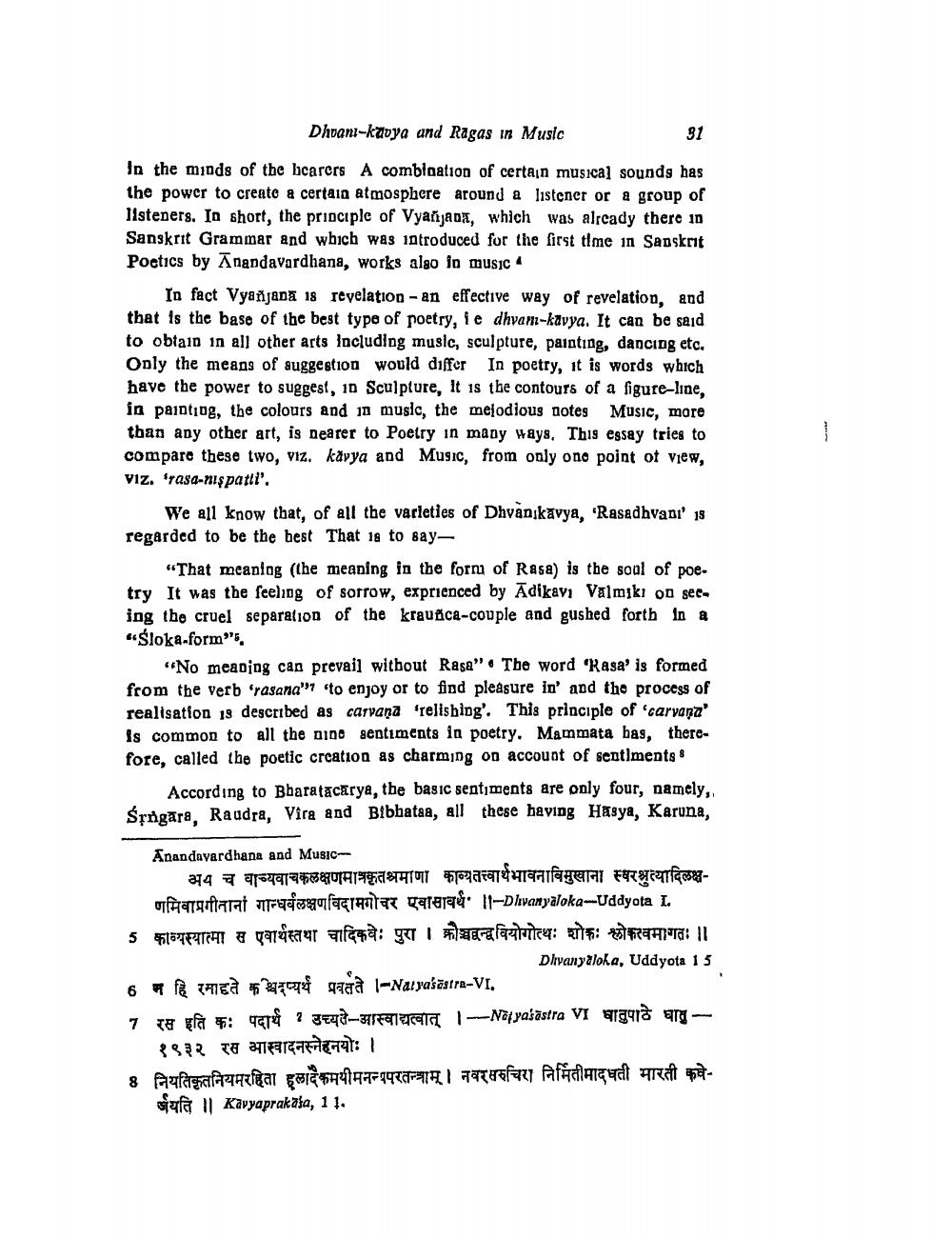________________
Dhvani-kavya and Ragas in Music
31
In the minds of the hearers A combination of certain musical sounds has the power to create a certain atmosphere around a listener or a group of listeners. In short, the principle of Vyañjanx, which was already there in Sanskrit Grammar and which was introduced for the first time in Sanskrit Poetics by Anandavardhana, works also in music 4
In fact Vyañjana 18 revelation - an effective way of revelation, and that is the base of the best type of poetry, ie dhvam-kavya. It can be said to obtain in all other arts including musle, sculpture, painting, dancing etc. Only the means of suggestion would differ In poetry, it is words which have the power to suggest, in Sculpture, It is the contours of a figure-line, in painting, the colours and in music, the melodious notes Music, more than any other art, is nearer to Poetry in many ways. This essay tries to compare these two, viz. kavya and Music, from only one point of view, VIZ. rase-spatti".
We all know that, of all the varieties of Dhvanikavya, 'Rasadhvanı' 15 regarded to be the best That 18 to say
"That meaning (the meaning in the form of Rasa) is the soul of poetry It was the feeling of sorrow, exprienced by Adikavi Valmiki on seeing the cruel separation of the krauñca-couple and gushed forth in a Śloka-form"
"No meaning can prevail without Rasa" The word "Rasa' is formed from the verb 'rasana" to enjoy or to find pleasure in' and the process of realisation 19 described as carvana 'relishing'. This principle of carvana' is common to all the nine sentiments in poetry. Mammata has, therefore, called the poetic creation as charming on account of sentiments
According to Bharatacarya, the basic sentiments are only four, namely,. Sragara, Raudra, Vira and Bibbatsa, all these having Hasya, Karuna,
Anandavardhana and Music
अथ च याच्या क्षणमात्रकृतश्रमाणा कान्यवत्त्वार्थ भावनाविमुखाना स्वरभुत्यादिचमागतानां गन्धर्वलक्षणविदामोदर एवासावर्थ 11-Dhvaryaloka-Uddyota L
5 काव्यस्यात्मा स एवार्थस्तथा चादिकयेः पुरा। मोहन्द्र वियोगोत्थः शोकः लोकत्वमागतः ||
Divanyaloka, Uddyota 15
6 न हि रमाते कदम्यर्थं प्रसते - Naryaatre-VI.
7 रस इति कः पदार्थ उपयठे आस्वाद्यत्वात् | Naypaastra V1 धातुपाठे धातु - १९३२ रस आस्वादनस्नेहनयोः ।
8 नियतिकृतनियमरहिता छादेकमपीमनन्यपरतन्त्राम्। नगरतरचिरा निर्मितीमादधती भारती कवेfa Kavyaprakasa, 11.




